End of the Road: Ushuaia , Argentina
February 24-27
On Friday, February 24, 2006 at approximately 2:53 p.m., two riders on a beat-up Moto Guzzi Quota, dressed in torn-up gear covered in mud and dust, unshaven and un-showered for the past three days, rolled past a sign that noted that the town they were entering, Ushuaia, was “The Southernmost City in the World.” Thirteen thousand five hundred miles and 111 days after leaving Virginia , we had reached the end of the road.
We were served breakfast before leaving the refinery, but we still had an hour and a half of gravel road riding ahead of us before we reached the Argentinean border. On the Argentina side we met a group of Brazilian riders, returning north from our destination in Ushuaia. From the border the road was paved, heading south along the coast through fir tree forests and coastal fishing villages.
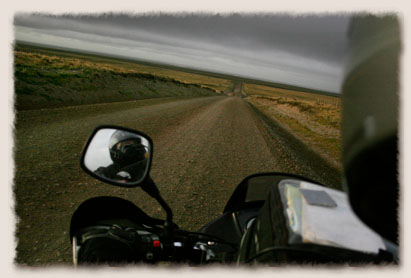
| |
The next morning we left the plant to finish the last 60 miles of the gravel road through Chile. |
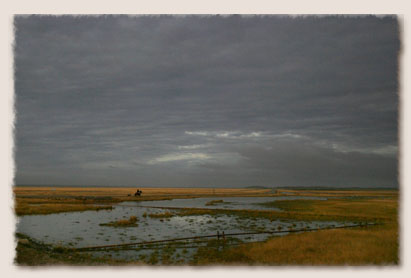
| |
Patagonia consisted of large farm fields with flocks of sheep and occasionally beef cattle. Ranchers tended to their flocks on horseback. |
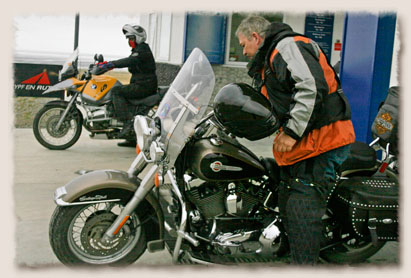
| |
We met three Brazilian riders heading back north on a Harley Heritage Softail and two BMW adventure tourers. The Harley rider said he hopes to one day tour all the way north on a Harley. |
As we approached Ushuaia, the Tierra del Fuego landscape changed from open Patagonia grasslands to end-of-the-world mountains and valleys, lightning blue lakes and glacier capped peaks. The pavement once again ended, as we mixed with road crews frantically trying to complete an asphalt highway for the length of Ruta 3. 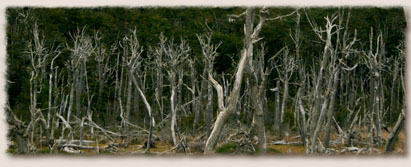
| |
As we neared Ushuaia mountains reappeared and pine forests covered the hills we rode through. |
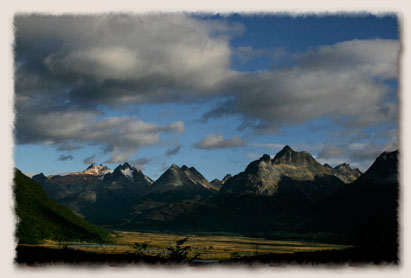
| |
Mountain tops had a few patches of snow left from the previous winter but they soon would be covered again as the summer season was just ending as we arrived in Tierra del Fuego. |
Coming through a mountain pass, the town of Ushuaia spreads out in a horseshoe shape as it hugs the Bay of Ushuaia that runs to Beagle Channel and the Atlantic Ocean . A port city, the bay is filled with sailing ships, ocean liners and cargo boats. The town rises above the water on a ridge that heads up to glacier-filled mountain valleys as the Andes end at the sea's edge. The streets that rise from the bay are populated with rustic-looking wooden houses that give Ushuaia the look of the logging town that it once was. 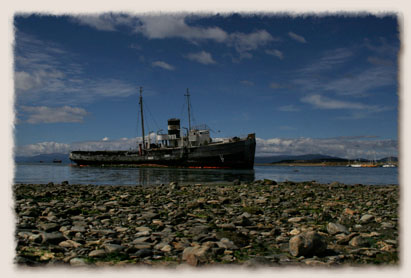
| |
An old fishing boat lies grounded in Ushuaia's port. |
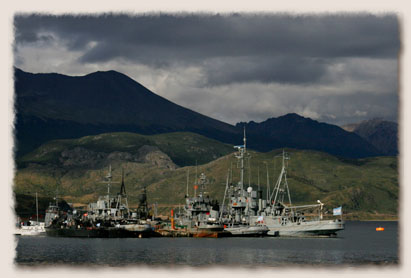
| |
A fleet of Argentinean naval ships at port. |
Ushuaia is a town that thrives on tourism. Despite its rugged appearance, the main drag featured designer clothing stores and four star restaurants that cater to the hoards of tourists that disembark from the airplanes and cruise ships that provide a comfortable ride into town. 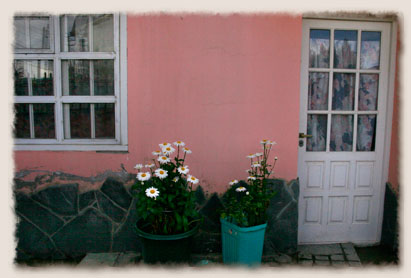
| |
The town of Ushuaia is home to about 55,000 people. |
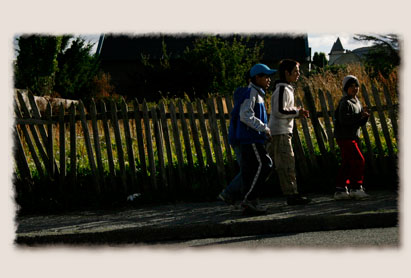
| |
School was still out for the summer while we stayed in town. |
With its proximity to the South Pole, days are long in Ushuaia, the dawn breaking at 6 a.m. and darkness not sitting in until 9:30 p.m., even in late summer. The weather was mild during the day, although it always got cold and rained at nights. We spent our days in Ushuaia catching up on journals, which we sent with a wireless signal we found in the town park, re-supplying and planning for the remaining part of the trip. The kitchen at the hostel we stayed at provided much needed relief from the meat-heavy Argentinean fare. We had reached the end of the road, as far south as the highway went. The rest of our trip would be mainly backtracking towards Buenos Aires , before flying back to the U.S.
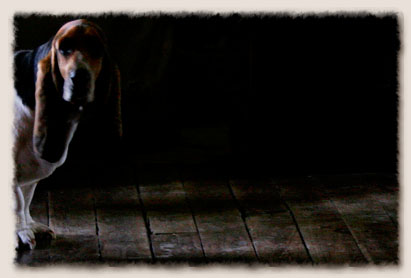
| |
A Dog Called Wanda ran the hostel we stayed at in Ushuaia. |
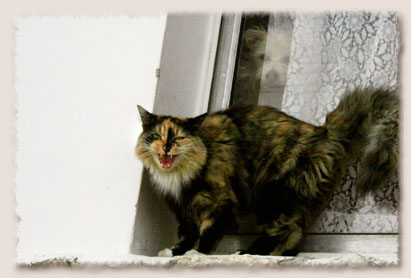
| |
Meowing, not hissing, this cat was driving the little white dog inside nuts. |
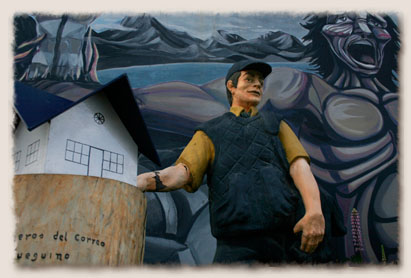
| |
This statue of a mailman at the post office had more of a smirk rather than a welcoming smile. |
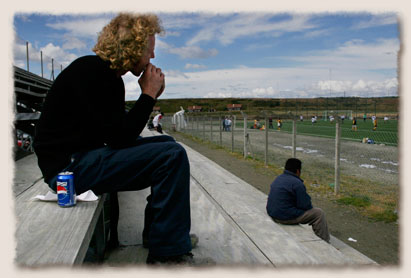
| |
Jeremiah sits in the stands watching a recreation league soccer game while enjoying a hot, grilled choripan or sausage on a bun. |
|
|